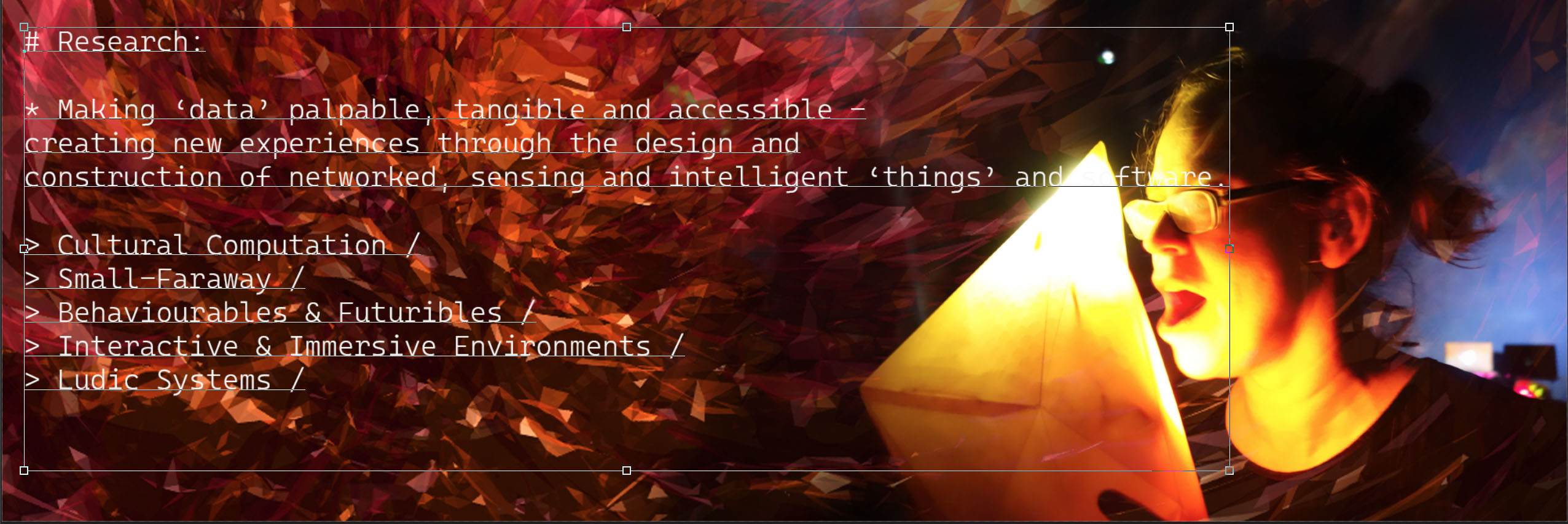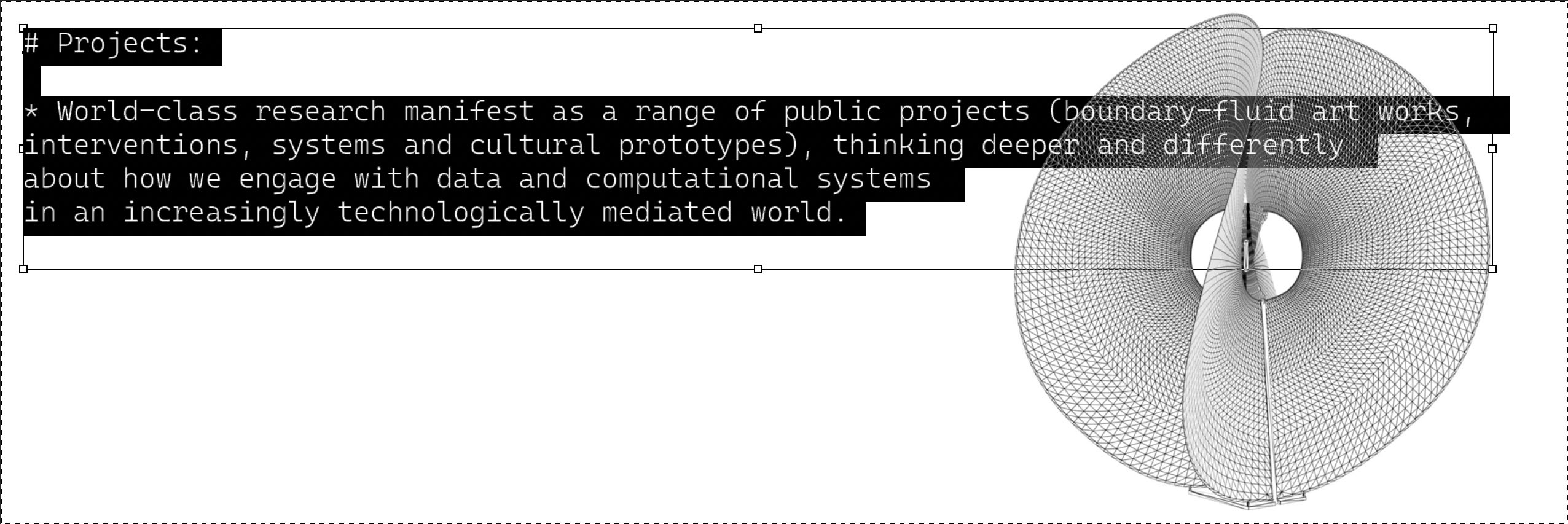It’s as though he’s alert to the current debate in the House of Commons chamber. We briefly discuss love, pain and flowers and when I ask him about the internet, he amusingly replies, “Excuse me?” Even with its Y2K interface, Autoicon is a technological wonder. It doesn’t just imagine black people in the future, it preserves them so that they arrive there safely and in their own image.
Kadish Morris (2020). ‘Union jack swastikas and space-age braids: Thirteen Ways of Looking – review’, The Guardian, 28 October 2020. Available at: https://www.theguardian.com/artanddesign/2020/oct/28/thirteen-ways-of-looking-review-cultural-identity-herbert-art-gallery-coventry (Accessed: 16 January 2021).
Autoicon is a dynamic internet work and CD-ROM that simulates both the physical presence and elements of the creative personality of the artist Donald Rodney who died from sickle-cell anaemia. The project builds on Donald Rodney’s artistic practice in his later years, when he increasingly began to delegate key roles in the organisation and production of his artwork. Making reference to this working process, AUTOICON is developed by a close group of friends and artists (his partner Diane Symons, Eddie Chambers, Richard Hylton, Virginia Nimarkoh, and Keith Piper) (ironically described as ‘Donald Rodney plc’ who have acted as an advisory and editorial board in the artist’s absence, and who specified the rules by which the ‘automated’ aspects of the project operate. http://www.iniva.org/autoicon/
Backstory:

donald.rodney:autoicon v1.0
http://www.iniva.org/autoicon
README AUTOICON is a dynamic artwork that simulates both the physical presence and elements of the creative personality of the artist Donald Rodney who – after initiating the project – died from sickle-cell anaemia in March 1998. It builds on Donald Rodney’s artistic practice in his later years, when he increasingly began to delegate key roles in the organisation and production of his artwork.
Making reference to this working process, AUTOICON is developed by a close group of friends and artists (ironically described as ‘Donald Rodney plc’) who have acted as an advisory and editorial board in the artist’s absence, and who specified the rules by which the automated aspects of the project operate.
This CD-ROM, in parallel to the internet version (http://www.iniva.org/autoicon), is automated by programmed rule-sets and works to continually maintain creative output. Users will encounter a ‘live’ presence through a ‘body’ of data (which refers to the mass of medical data produced on the human body), be able to engage in simulated dialogue (derived from interviews and memories), and in turn affect an auto-generative montage-machine that assembles images collected from the user’s hard-drive (rather like a sketchbook of ideas in flux).
Through AUTOICON, participants can generate new work in the spirit of Donald’s art practice as well as offer a challenge to and critique the idea of monolithic creativity. In this way, the project draws attention to current ideas around human-machine assemblages, dis-embodied exchange and deferred authorship – and raises timely questions over digital creativity, ethics and memorial.
Further information on the artist and his work is included on the CD-ROM.
For more information email autoicon@iniva.org
INSTRUCTIONS
This software requires no specific installation – it is designed to run straight off the CD-Rom. However, it does require a working installation of Apple’s QuickTime 4. The installer is provided on the CD-Rom in a folder called ‘QuickTime 4’. Please ensure you have fully installed QuickTime 4 before trying to use AUTOICON.
To launch the AUTOICON software, insert the CD into your CD-Rom drive. Navigate to the files on the CD-Rom (Macintosh users should double click the icon that appears on your desktop, Windows users should browse inside ‘My Computer’). Double-click the ‘AUTOICON’ application icon.
The software takes a few moments to start up. Once loaded, click the ‘Continue’ button to launch the software. Interact with the AUTOICON by typing text into the field in the centre of the screen. While you engage in a discussion with the AUTOICON, a montage will be derived from bits of images found on your own hard-drive.
The ‘Activities’ menu allows you to view other aspects of the project, including a slideshow and artist biography. You can also choose to watch the montage in progress, or you can examine the software’s internal memory. External links to the AUTOICON web site and for email feedback are also provided.
If you would like to export the generated montage, choose ‘Save As…’ from the ‘File’ menu.
To leave the AUTOICON, go to the ‘File’ menu, and choose ‘Quit’.
MINIMUM SYSTEM REQUIREMENTS
Macintosh:
Power PC Processor (G3/266 pref.)
System 8.0 or later
32mb RAM
Quad-speed CD-Rom Drive
QuickTime 4 (installer provided)
Windows:
Pentium P200 Processor or higher
Windows 95, 98, NT or 2000
32mb RAM
Quad-speed CD-Rom Drive
QuickTime 4 (installer provided)
CREDITS
Software written by Adrian Ward (adrian@signwave.co.uk). Produced by Geoff Cox & Mike Phillips; STAR (Science Technology Arts Research, University of Plymouth), inIVA (Institute of International Visual Arts) and Signwave, with support from the Arts Council of England (New Media Fund). With contributions from Eddie Chambers, Richard Hylton, Angelika Koechert, Virginia Nimarkoh, Keith Piper, Gary Stewart & Diane Symons. Media courtesy of the artist’s estate and Black Audio Film Collective. Thanks to Pete Everett, Dave Grogono, Ruth Kelly, Paul Khera and Elliot Lewis.
Project © Copyright 2000 STAR, inIVA, Signwave & the estate of Donald Rodney.
Autoicon engine © Copyright 2000 Signwave and its licensors.
HTMLField component © Copyright 1998-2000 Doug Holton.
Media © Copyright 1999-2000 various sources.
QuickTime and the QuickTime logo are trademarks used under license.
Published by the Institute of International Visual Arts (inIVA) and STAR.
inIVA,
6-8 Standard Place,
Rivington Street,
London, EC2A 3BE, UK.
Internet: http://www.iniva.org
Tel: +44 20 7729 9616
Fax: +44 20 7729 9509
STAR (Science Technology Art Research)
School of Computing, University of Plymouth,
Drake Circus, Plymouth, PL4 8AA, UK
Internet: http://www.CAiiA-STAR.net
Tel: +44 1752 232541
Fax: +44 1752 232540
Donald Rodney Autoicon Launch at inIVA:
Invitation:



inIVA Launch.
Still not sure what the urination was about. The Dirty Space? Something may have got lost in translation.










References:
Phillips, M., Cox, G. ‘Donald Rodney – Autoicon. The Death of an Artist’. In EMERGENT FUTURES, Art, Interactivity and New Media / FUTUROS EMERGENTES , Arte Interactividad y Nuevos Medios”. Eds Molina, A. and Landa, K.. ISBN 84-7822-326-6. Alfons el Magnanim. 2000, Valencia.
Phillips, M. Memoria Technica, Donald G Rodney Autoicon. Mediaspace 5,
‘Autoicon’ CD-Rom & website (collective), exhibition to accompany conference, ‘Race and Digital Space’, Massachusetts Institute of Technology, USA. April 2001. http://cms.mit.edu/race/
‘Autoicon’ CD-Rom (collective), part of exhibition, ‘Art In Motion II’, Santa Monica Museum of Art, Santa Monica CA, USA. 2001.
















You must be logged in to post a comment.